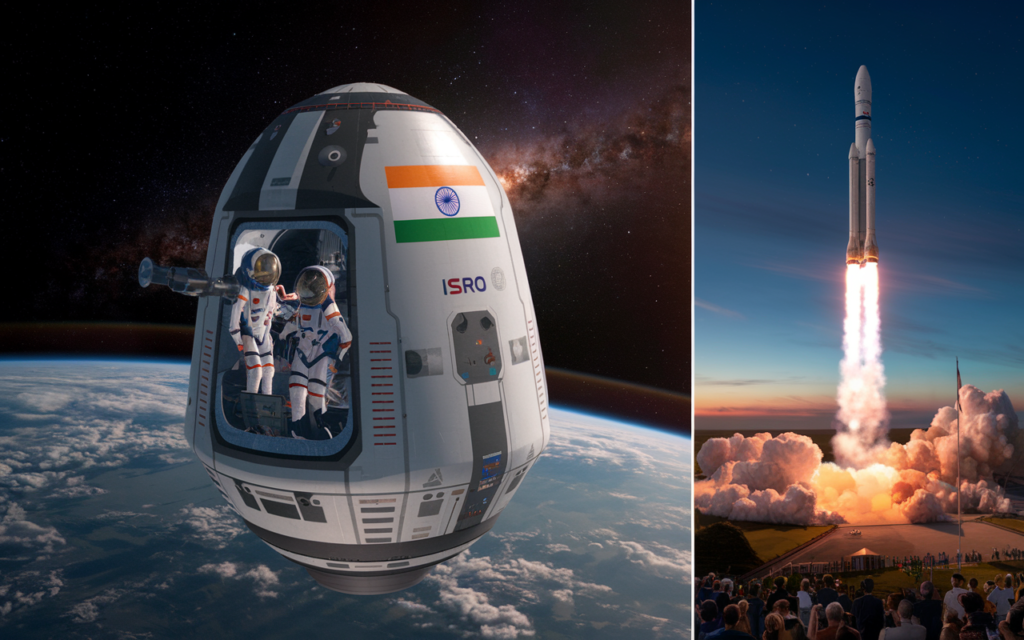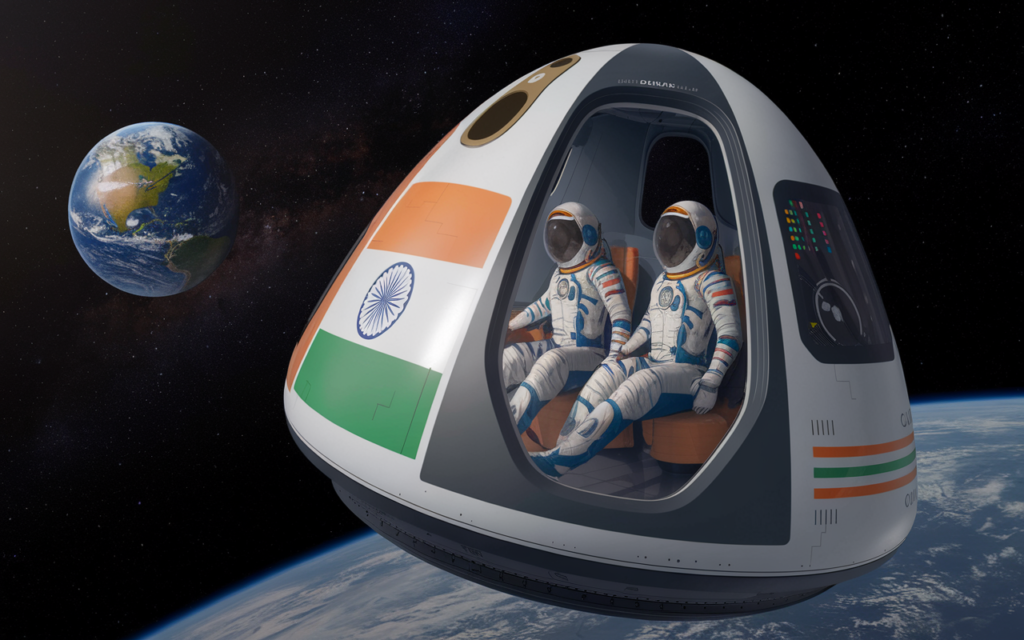The Gaganyaan Mission is a historic project by the Indian Space Research Organisation (ISRO), aiming to send Indian astronauts, also called Vyomanauts, into space. Announced as part of India’s ambitious space exploration efforts, this mission represents a giant leap forward for the country in space science and technology. Let’s dive into what the Gaganyaan mission is, its objectives, and why it is a milestone in India’s space journey.

Read This Also:- Exploring ISRO’s Gaganyaan Mission
What is the Gaganyaan Mission?
The Gaganyaan Mission is India’s first human spaceflight program that seeks to send four Indian astronauts into Low Earth Orbit (LEO), at an altitude of 300–400 km for a mission duration of 3–7 days. Once successful, India will join an elite group of nations—alongside the USA, Russia, and China—that have achieved human spaceflight.
Key Objectives of the Gaganyaan Mission
The Gaganyaan mission is a critical part of ISRO’s efforts to develop self-reliant space technology for human space exploration. Here are the key objectives:
- Human Spaceflight: To send Indian astronauts into space for 3–7 days, demonstrating India’s capability to safely send and return humans from space.
- Technological Development: The mission will drive advancements in various technologies like life support systems, emergency escape mechanisms, and re-entry systems.
- Scientific and Educational Benefits: The astronauts will conduct experiments in space that will have important scientific, educational, and research benefits for India.

GSLV Mk III Rocket: The Power Behind Gaganyaan
One of the key components of the mission is the GSLV Mk III (Geosynchronous Satellite Launch Vehicle), also known as LVM-3, which will be used to launch the crew into space. This powerful rocket has been tested multiple times and has been fine-tuned to carry the weight of astronauts and the crew module into space.
The Crew Module that the astronauts will live in during the mission is designed with life support systems, thermal shields, and safety mechanisms that will protect them throughout the flight, including during re-entry into Earth’s atmosphere.
Phases of the Gaganyaan Mission
To ensure the safety and success of the mission, the Gaganyaan Mission will be conducted in phases:
- Uncrewed Test Flights: Before sending astronauts, ISRO will conduct two uncrewed flights to test all critical systems, including the crew module, life support, and safety measures. These test flights will simulate the mission and help in fine-tuning the systems. The first of these uncrewed flights is expected in 2024.
- Manned Flight: Once the uncrewed flights are successful, the crewed mission will follow, which will send four astronauts into space for 3–7 days. They will orbit the Earth, conduct scientific experiments, and demonstrate India’s spaceflight capabilities.
Read This Also:- Gaganyaan Mission Crew Members Name List

Astronaut Training and Safety
The selected astronauts, or Vyomanauts, have undergone extensive training in both India and abroad (in collaboration with Russia). Their training covers a variety of skills, including survival training, flight simulation, and zero-gravity exercises. ISRO is also implementing multiple safety features, such as a launch abort system, which ensures that the astronauts can safely exit the spacecraft in case of any emergency during the launch or re-entry.
Why is Gaganyaan Important?
The Gaganyaan Mission is more than just India’s first human spaceflight—it represents a significant milestone in India’s space program for several reasons:
- India’s Fourth Spot in Human Spaceflight: India is set to become the fourth nation to independently send humans into space, joining the USA, Russia, and China.
- Technological Milestone: This mission will accelerate advancements in space technology, contributing to other long-term projects like space station development and potential interplanetary missions.
- Scientific Contributions: The mission will also allow India to contribute to global space science by conducting experiments in a low-gravity environment.
Timeline and Future Plans
The Gaganyaan Mission is planned for launch by 2025, following the successful completion of its uncrewed test flights in 2024. ISRO is also working on a series of future space exploration missions, including plans for a space station by 2030. Gaganyaan is just the first step in India’s long-term goals of human space exploration.
Conclusion: A New Era for India in Space
The Gaganyaan Mission is not only a testament to India’s growing prowess in space technology but also a source of national pride. It represents the culmination of decades of hard work by ISRO, paving the way for India’s entry into human spaceflight. As the nation prepares to send its first astronauts into space, the world will watch as India takes one giant leap forward into the future of space exploration.
This mission, when successful, will place India on the global map as a formidable player in space exploration, setting the stage for more ambitious ventures like establishing a space station and conducting interplanetary missions in the years to come.
Stay tuned for more updates on Gaganyaan and India’s journey to space!